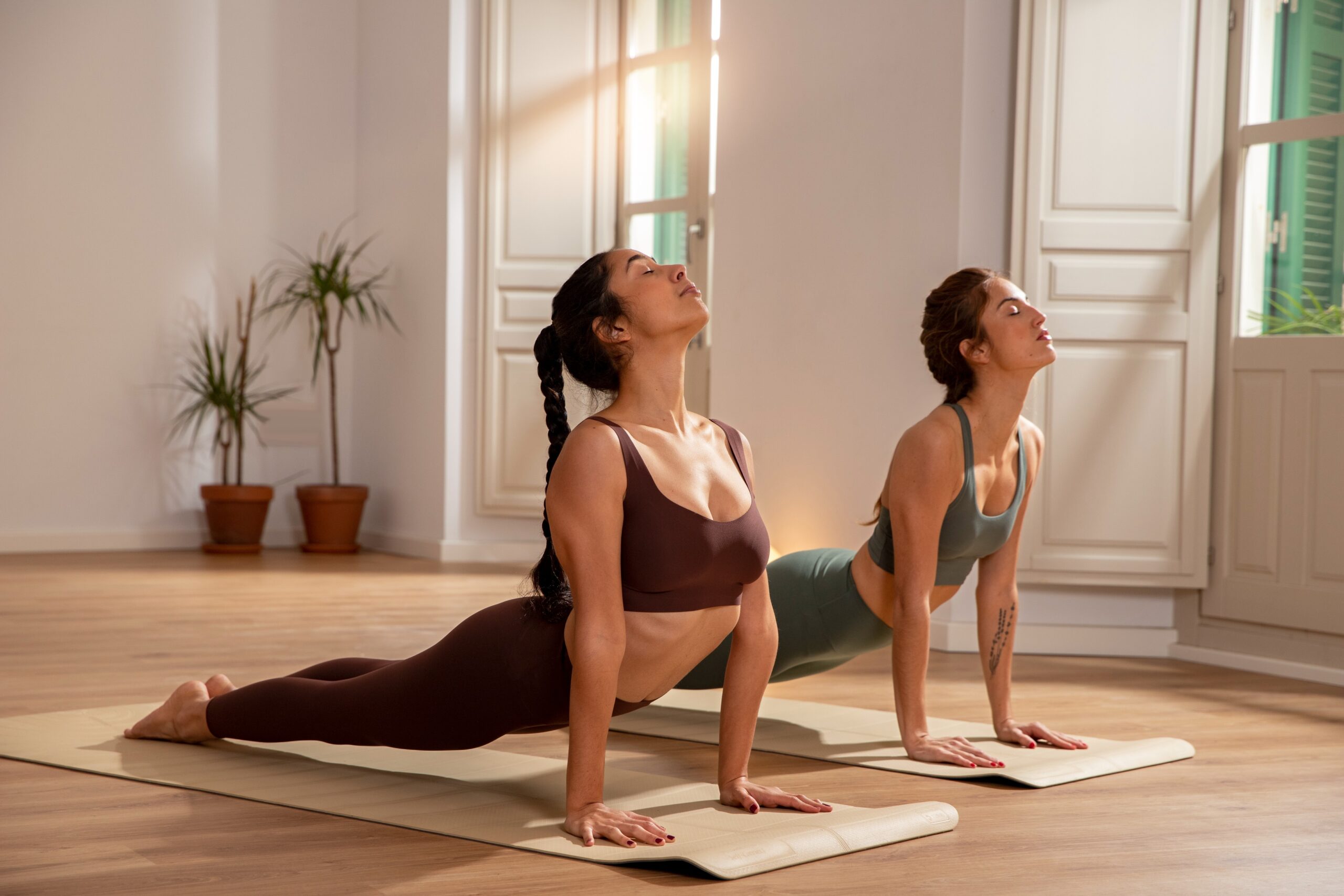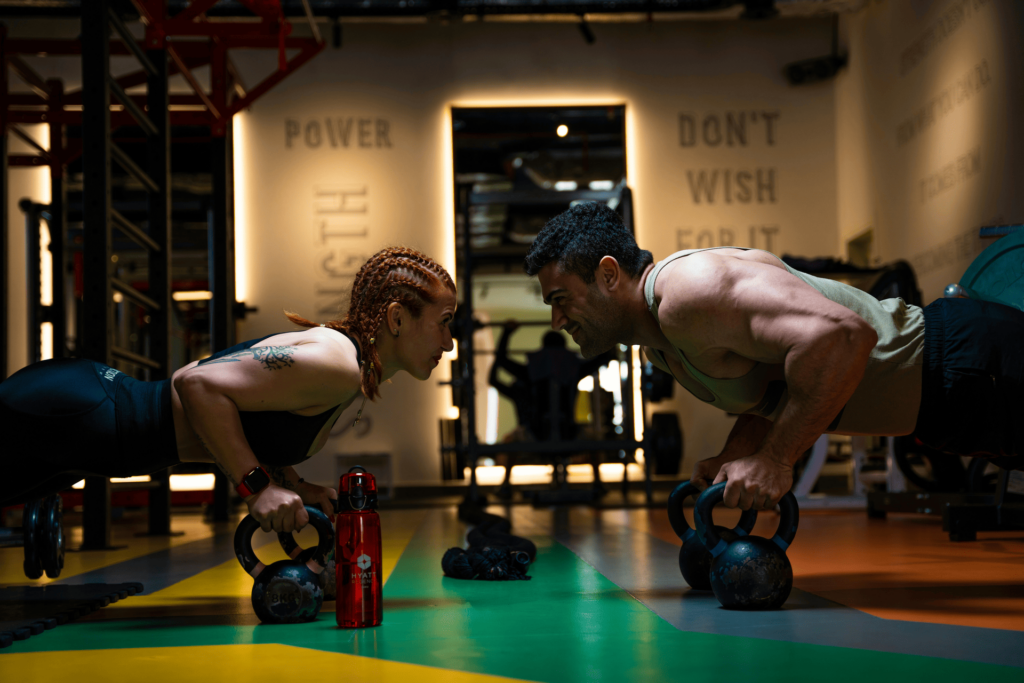Yoga for beginners is all about taking your first step with confidence and ease. This 7-day yoga plan helps you start from scratch, with short 10- to 15-minute sessions that guide you through simple movements and mindful breathing.
In your first week, you’ll learn how to set up your space, ease into beginner-friendly poses, and experience how yoga improves flexibility, concentration, and relaxation. Each day builds on the last, forming a routine that easily fits into your schedule, no matter how busy it is.
By the end of this guide, you’ll feel more grounded, less tense, and more in tune with your body. Ready to keep going with calm confidence.
Why Start a 7-Day Yoga Plan for Beginners?
A 7-day yoga plan gives beginners a simple, structured way to build confidence and create a habit without overwhelming pressure. With just 10 to 15 minutes a day, you will lay the groundwork for movement, breath awareness, and mental focus.
The biggest challenge for most beginners isn’t flexibility but consistency. Studies show that short, daily habits are easier to maintain and more likely to stick. When you keep your sessions brief and manageable, your brain starts to associate yoga with calm, focus, and self-care, turning it into something you look forward to rather than something you “have to” do.
It’s like learning guitar; you wouldn’t jump into a two-hour jam session. You’d rather start with 10 minutes a day until your fingers adjust. Yoga works the same way. One mindful week adds up to real progress: more strength, more clarity, and more momentum.
This plan isn’t about perfect poses. It’s about showing up daily, building consistency, and giving your body and mind the space to grow.
How to Prepare Your First Yoga Session at Home (Beginner Tips)
Getting ready for your first yoga session doesn’t need to be complicated. A little preparation can help you feel focused, comfortable, and confident, even if you have never stepped on a mat before.
Yoga is about cultivating the right mindset and creating the right space. A calm, clutter-free environment tells your mind it’s time to turn inward, focus, and let go of distractions. That slight shift in setting can make the difference between a rushed session and one that feels truly grounding.
Here’s how to set yourself up for yoga sessions:
- Choose a quiet space: Pick a spot where you won’t be interrupted. Even a peaceful corner of your bedroom or living room can work. Clear the clutter and make sure there’s space to stretch your arms and legs.
- Gather your equipment: Grab your yoga mat. Wear clothes you can move in easily. Props like blocks, straps, or even a pillow can support your body and make poses more accessible.
- Set your intention: Before you begin, pause. Take a deep breath and ask yourself: What do I want from this session? It could be energy, calm, strength, or simply a break from stress. That intention guides your focus.
- Minimize distractions: Turn off notifications, step away from your screen, and let others know you will be unavailable for about 15 minutes. This short window is your personal reset.
When you prepare with care, you are doing more than setting up a space; you are creating a signal to your mind and body that it’s time to slow down. Whether you are just starting or picking up after a break, these simple steps ensure each session begins with a calm, active lifestyle and mental clarity.
What are the Benefits of Yoga for Beginners in the First Week?
You don’t need months of practice to feel a difference. Even in your first week, yoga can spark noticeable shifts, both physically and mentally. Just a few consistent sessions can loosen tense muscles, improve your movement, and help your mind slow down.
Here’s what many beginners experience in their first 7 days:
Physical Benefits
- Improved flexibility and balance: Your muscles begin to loosen, especially in areas that get tight from sitting, such as the hips, hamstrings, and shoulders. Even simple poses gently stretch and activate your body.
Increased strength: Yoga isn’t just stretching. Poses like Plank, Chair, and Warrior work your core, arms, and legs, helping you build strength without heavy impact. - Better posture and body awareness: You’ll begin to notice how you sit, stand, and breathe throughout the day. This awareness reduces tension and improves how you move in daily life.
- Stronger immune response: By reducing stress and supporting better sleep, yoga may help boost your immune system, even in the early stages.
Mental and Emotional Benefits
- Stress relief: Short sessions offer a space to slow down, breathe, and mentally reset — especially helpful during busy or overwhelming weeks.
- Mood support: Breathing-focused practices and gentle movement can ease low moods and support emotional balance, especially when paired with consistent routines.
Reduced anxiety: Simple flows and grounding poses help calm the nervous system, making anxiety feel more manageable. - Improved sleep: Gentle evening practice or breath work can help you unwind and prepare for deeper, more restful sleep.
By showing up daily, even for just 10 minutes, you’re telling your body it’s safe to relax and your mind it’s okay to pause. That’s the foundation of lasting strength, balance, and calm. Now, let’s walk through how to bring that to life over the next 7 days.
How to Follow a 7-Day Step-by-Step Yoga for Beginners Plan?
Here’s a simple 7-day schedule of short, beginner-friendly flows. Each day centers on one intention, allowing you to explore yoga gradually and avoid burnout. You can also follow these yoga leg stretches to improve flexibility and relieve tight muscles throughout the week.
Day 1: Gentle Full-Body Stretch (10 minutes)
Focus: Ease your body into movement.
- Seated breathing (2 minutes)
- Cat-Cow for spinal mobility
- Downward Dog to loosen hamstrings
- Child’s Pose to relax your back
Goal: Get comfortable with transitions and feel connected to your breath.
Day 2: Standing Balance Basics (12 minutes)
Focus: Build stability.
- Mountain Pose for alignment
- Chair Pose to engage thighs and core
- Tree Pose, practice both sides
- Forward Fold for gentle release
Goal: Discover how balance deepens focus and awareness.
Day 3: Core and Strength Flow (15 minutes)
Focus: Strengthen your foundation.
- Plank to Low Plank (knees down if needed)
Cobra Pose to open your chest - Bridge Pose for lower body strength
- Seated Twist for digestion
Goal: Feel grounded and strong. If your arms shake during Plank, that’s okay. It means you’re building strength. Go at your own pace.
Day 4: Hip and Lower Back Release (12 minutes)
Focus: Ease tension from sitting.
- Butterfly Stretch
- Low Lunge (each side)
- Pigeon Pose or Figure Four
- Savasana (resting pose)
Goal: Gently release tightness in your hips and spine.
Day 5: Energizing Morning Flow (10 minutes)
Focus: Boost energy naturally.
- 2–3 rounds of Sun Salutations
- Warrior I and II to build focus
- Triangle Pose to open up the body
- Standing Forward Fold to reset
Goal: Start your day feeling awake, alert, and centered.
Day 6: Mindful Breathing + Slow Flow (10 minutes)
Focus: Connect breath with movement.
- Alternate nostril breathing (3 minutes)
- Cat-Cow to Downward Dog
- Seated Forward Fold
- Savasana to relax completely
Goal: Let your breath guide your movement and calm your mind.
Day 7: Relax and Reflect Flow (15 minutes)
Focus: Reflect on and restore your week.
- Gentle stretches (neck, shoulders, legs)
- Legs-Up-the-Wall Pose
- Reclined Twist
- Guided Body Scan
Goal: Notice the shifts. Your body feels lighter, your mind calmer, your breath deeper.
Tip: Keep a notebook or phone note to track how each session feels. Reflection helps you stay mindful, motivated, and aware of how far you’ve come, even in just 7 days.
What to Do After Completing Your First 7-Day Yoga for Beginners Plan?
Finishing your first week of yoga is a big win and just the beginning. You’ve built a solid foundation, strengthened your body awareness, and connected movement with breath. So how do you keep the momentum going? The key is to stay consistent, stay curious, and keep growing gently.
Here’s how to move forward with purpose:
Repeat the plan for another week or two.
Repetition deepens your practice. As you revisit familiar poses, they’ll feel more natural. You’ll notice smoother transitions, steadier breathing, and more body awareness. What once felt new will start to feel like second nature.
Gradually increase your practice time.
Once 10–15 minutes feels easy, try extending your sessions to 20 or 25 minutes. With more time, you can hold poses longer, explore new sequences, or add in guided breathing techniques and short meditations.
Explore different yoga styles.
Each style offers something unique: Hatha yoga is great for alignment and posture, Vinyasa yoga introduces fluid, energizing sequences, and Restorative yoga focuses on deep rest and recovery.
Trying different styles helps you find what fits your mood, goals, and lifestyle.
Join a class or online yoga community.
Practicing with an instructor, online or in person, gives you structure, motivation, and new techniques to explore safely. It also helps you feel supported and inspired by others on a similar journey.
Keep this open, curious mindset, and your yoga practice will naturally evolve from a beginner’s habit into a lifelong routine rooted in strength, stillness, and self-awareness.
Conclusion: Start Your Yoga Journey with Confidence
You don’t need to be flexible, experienced, or have the best yoga equipment right away. You need the willingness to begin. This 7-day plan is designed to ease you in gently, with short daily flows that guide your body and mind toward balance and clarity.
Even 10 minutes a day can make a meaningful shift. Over time, those small sessions build into something powerful: more strength, more awareness, more calm. Trust the process, your breathing, body, and mat will lead the way. And remember, you’ve already done the most challenging part: you showed up.
Frequently Asked Questions (FAQs)
Here are the commonly asked questions about yoga for beginners.


